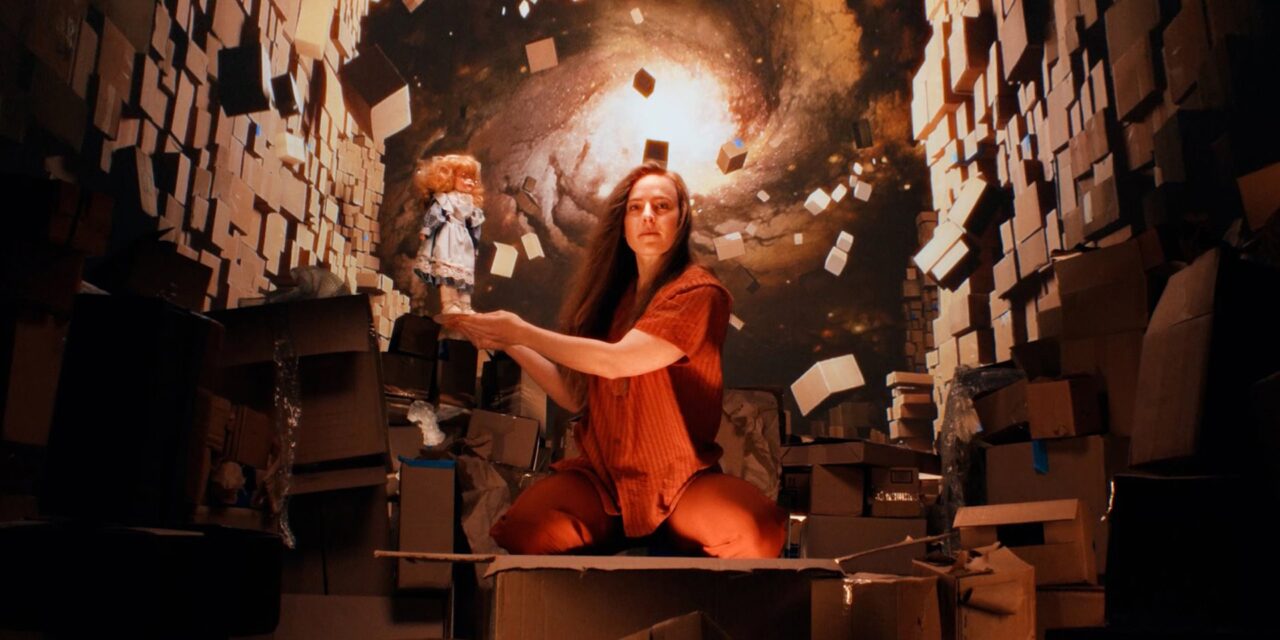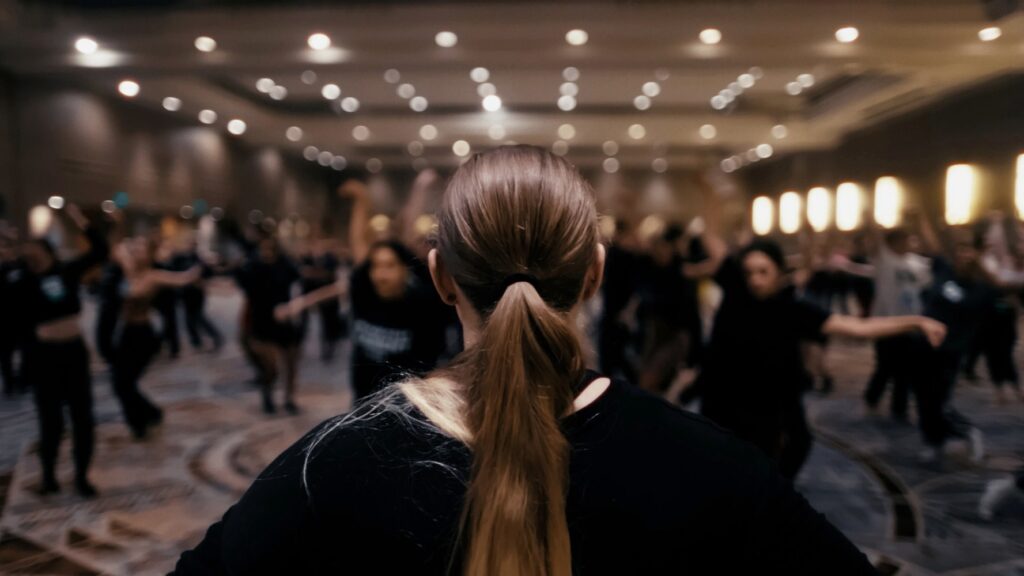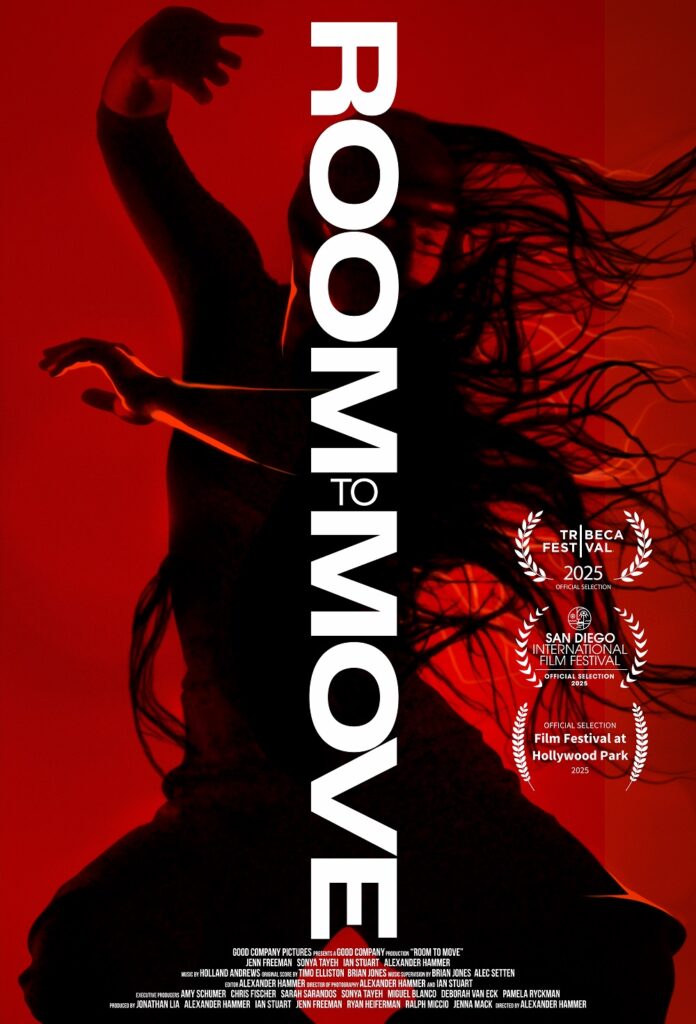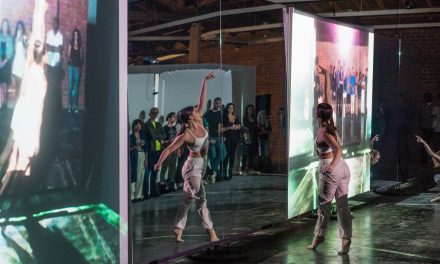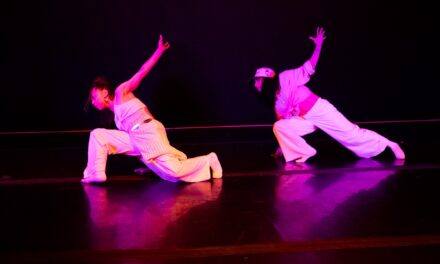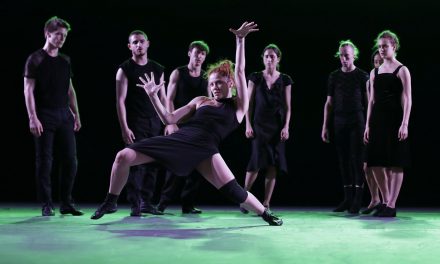On October 10, 2025, the mammoth Cinepolis Luxury Cinemas, at Inglewood’s IMAX, premiered Room to Move, 2025 Tribeca Film Festival’s World Premiere –at Hollywood Park. Dinner menus placed on small swinging tables at the cushioned seats, waiters answering to blue-button calls, the promise of a full dinner before the main presentation, made this a true experience in more ways than one. The audience was intimate and supportive and the wait increased the anticipation of what was to come. Lights dimmed as three figures climb the coliseum seating steps and settle in the back row. The screen lights up and we’re ready.
Room to Move the film title, is the underlying basic to this film. It explores the breadth of space and confinement with Dance as the cloud on which it floats. It is a complex, intimate and emotional filmic journey. It begins with Jenn Freeman, a powerful explosive dancer/choreographer and educator receiving a diagnosis at age 33, of Autism Spectrum Disorder (ASD). Her concert deadline and her life-changing condition allows us to travel through the difficult road of reworking a whole life. Director Alexander Hammer’s personal journey with former dancer and friend, a Gestalt-based movement therapist, exposes intimate internal discoveries in order to heal. The friend’s experience as a LGBTQIA+ therapist helping struggling youth to communicate, allowed this association to became a game changer for Hammer.
Like Freeman’s life since birth, it is filled with holographic discoveries. Complicated, painful and healing, the 110 minute film shows how this warrior, with the help of her close and beloved partner, friends and family, helps support the unwinding of this complex narrative.
The de-puzzling of Room to Move by director, editor, co-cinematographer, and producer Alexander Hammer, brings a “deep sensitivity to the story and to the nonverbal power of movement itself,” and connects the viewer on a deeply human level. Hammer and his experience with “Expecting Amy,” a docu-series on Amy Schumer’s difficult pregnancy and her husband’s autism diagnosis was Freeman’s inspiration to seek an evaluation and is the line that impels the story. With Hammer’s ability to tell this narrative, he creates a near spiritual and mythical essence through the elation of her performances and classes that so inspire the students and onlookers. It is juxtaposed with rough footage of Freeman as a child and young adult that helps make this both beautiful and gritty. It also becomes instructional for those who see how this unfolding could be a relieving epiphany, understanding whether this neuro divergence is a miracle or a malady.
At times, in the film, however, the experience is so internal and painful as to become agonizing. It is clear this film was made out of love and friendship with a desire to tell all, however, parts could be synthesized without underplaying the hand while still telling the story. The cross narratives create multi layers that integrate the deep feelings, yet as much as is revealed throughout the film, at the finale there is a surprise discovery that is integrated into the mix.
Freeman’s friends, family and colleagues help lift and interweave the story. The appearance of New York, Brooklyn, rural Idaho, the subway, La Jolla Playhouse, all are characters in this unfolding narrative. Sonya Tayeh, award winning New York based choreographer and director becomes a bit of a soothsayer and champion, ever able to encourage Freeman’s work and inspire the hope of funding for her first evening-length solo performance, “Is It Thursday Yet?”
With the help of Exec Producers: Amy Schumer, Chris Fischer, Sonya Tayeh, Miguel Blanco, Deborah Van Eck, Pamela Ryckman the work is allowed to be seen as a mirror for those who might recognize it as hope and possibilities. Jonathan Lia, producer with a history and track record, clearly understood the importance of this making along with producers, Hammer, Freeman, Ryan Heiferman, Ralph Miccio, and Jenna Mack. One had to marvel, in particular the love and encouragement of Freeman’s partner/husband and producer Ian Stuart who captured much of the intimate moments and was heroic in soldiering on and giving support through Freeman’s uneasy journey.
Room to Move is a powerful narrative of discovery, honesty and courage. It’s worth seeing for its in-depth revelations, interesting aesthetic filmmaking, challenges and unfolding struggles for those with ASD. A tough journey that, in this case, gives hope and understanding. It beautifully integrates psychology, dance, and filmmaking as art. Its power is an important aspect that helps show the struggle with the courage, and the genius that’s gifted to us all.
To learn more about Jenn Freeman, please visit her website.
To learn more about the documentary Room To Move, please visit https://www.roomtomovefilm.com/
Written by Joanne DiVito for LA Dance Chronicle.
Featured image: Jenn Freeman in Room To Move – Screenshot courtesy of Good Company Pictures.

